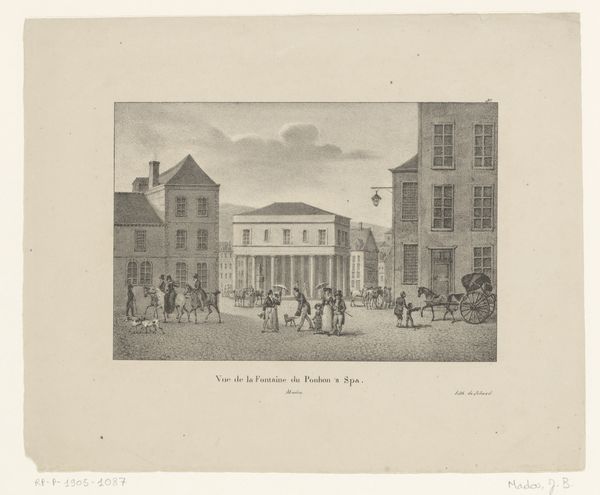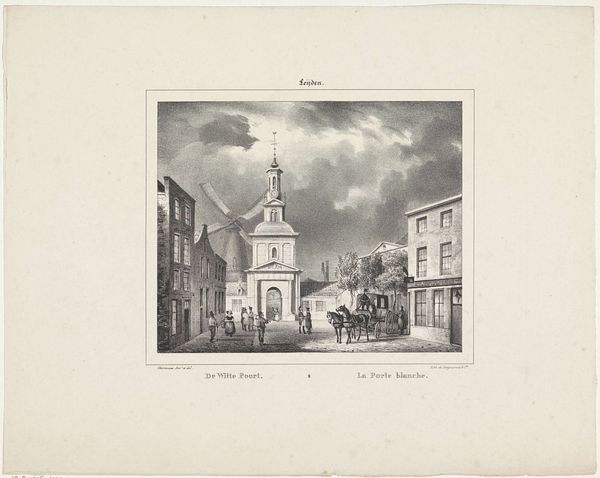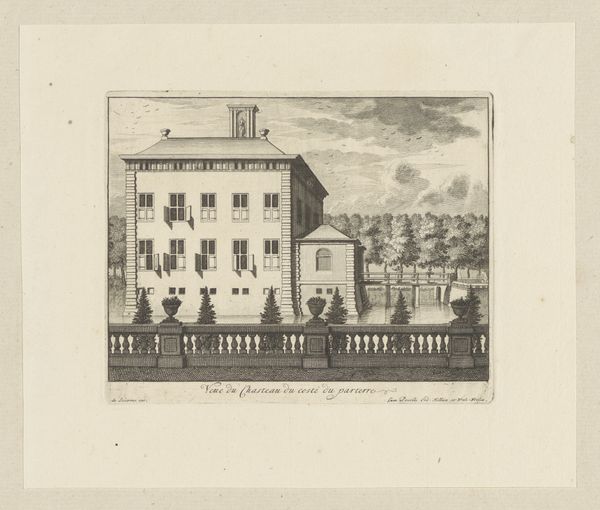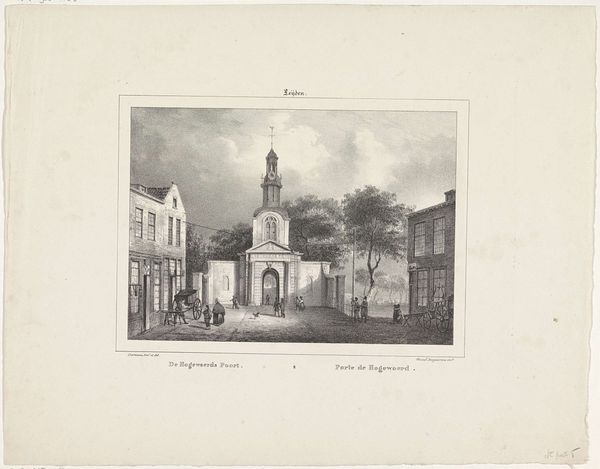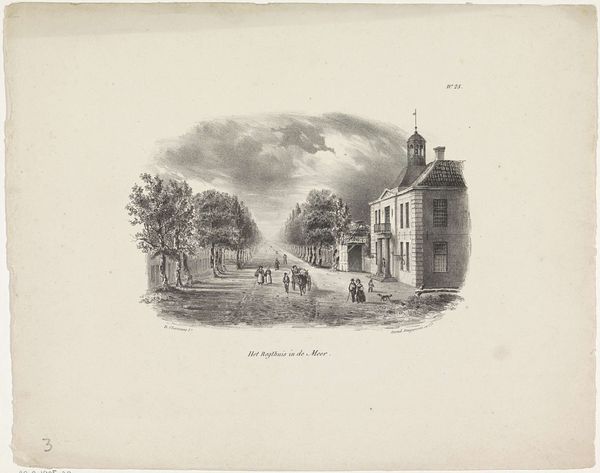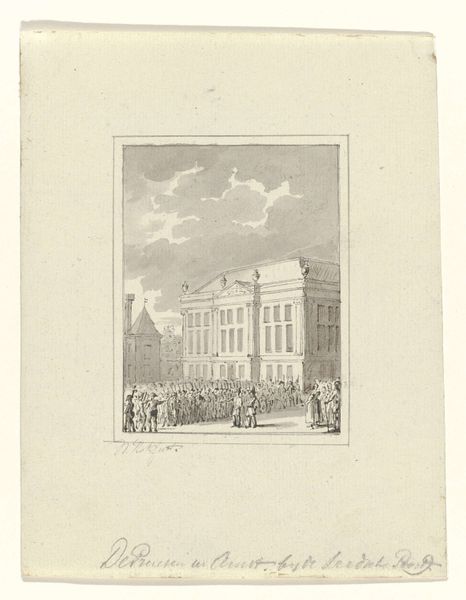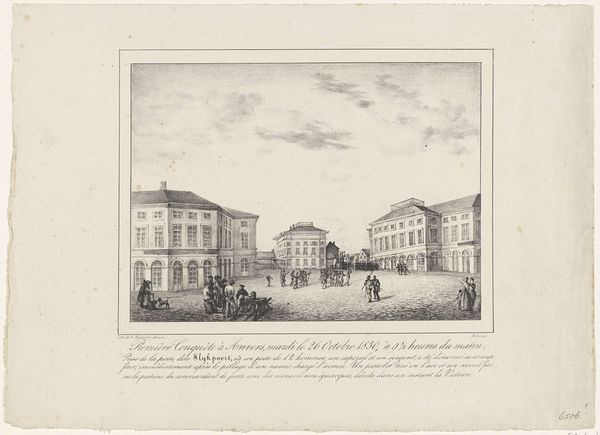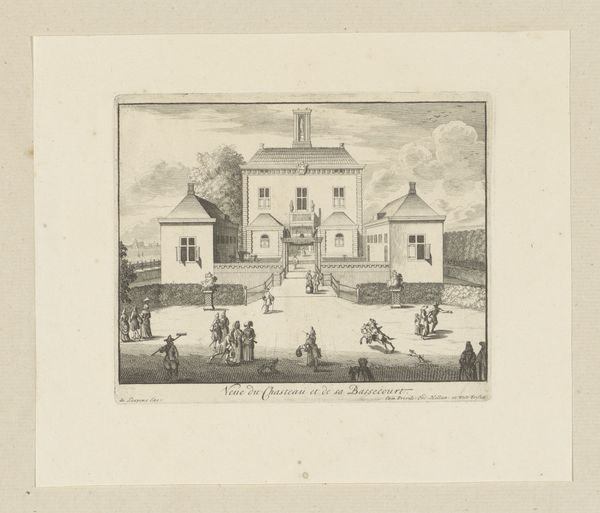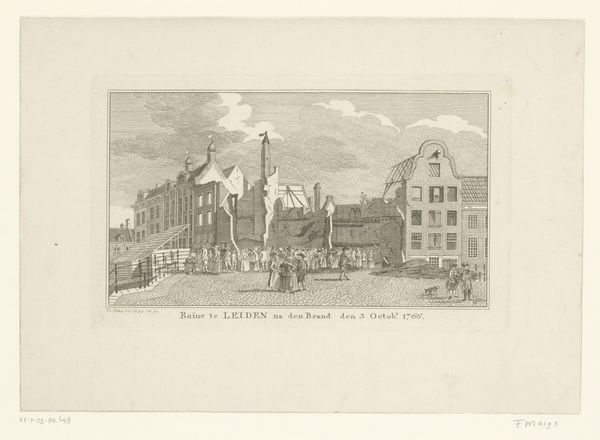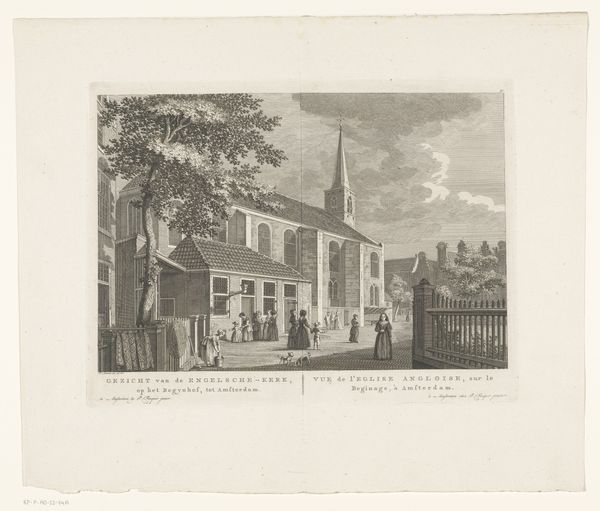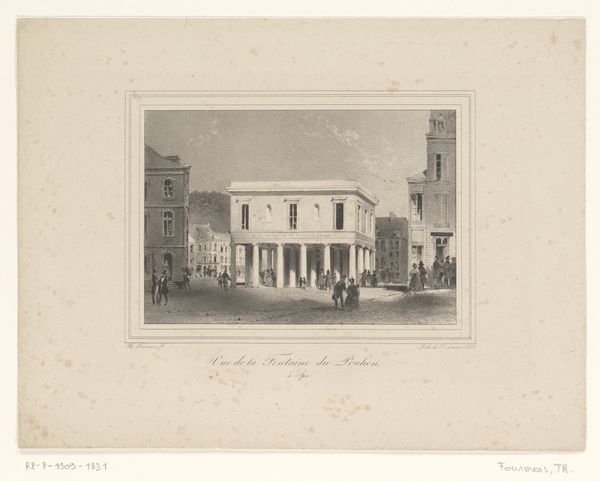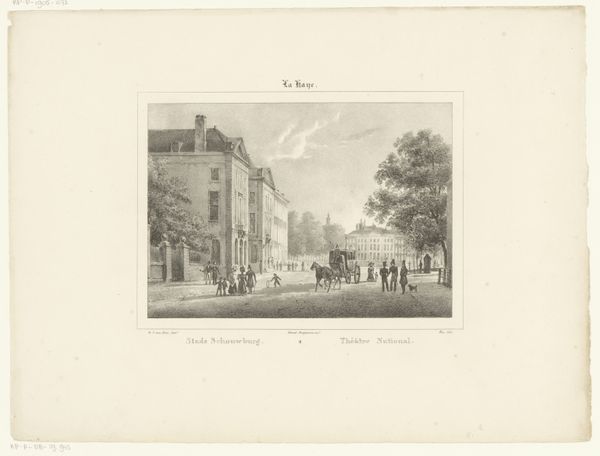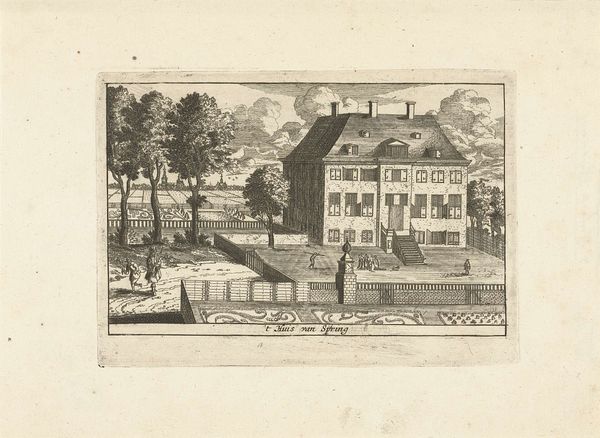
#
neoclacissism
# print
#
cityscape
#
genre-painting
Dimensions: height 275 mm, width 346 mm
Copyright: Rijks Museum: Open Domain
Curator: Looking at this print by J.B. Clermans, titled "Gezicht op de Waag in Leiden" and created sometime between 1826 and 1839, I'm immediately struck by its sense of order. The clean lines of the Waag itself, framed against a somewhat turbulent sky, it has an air of almost neoclassical precision. Editor: My eyes are drawn to the central structure, the Waag itself. The figures add life to the scene, but it's that rather imposing building that commands attention, a symbolic center in a visual narrative. It suggests societal balance and regulated trade, literally, ‘weighing’ what is brought in for sale. Curator: Exactly. The Waag, as a public weighing house, was more than just a practical building. It symbolized the power of the city, its ability to regulate commerce, and its commitment to fair trade. Clermans’ image reflects the institutional framework that structured everyday life in Leiden at the time. Genre painting, like this one, gives clues to local culture. Editor: And that's reflected in the details he chooses to depict. The people clustered in front of the building seem engaged in business, perhaps waiting to have their goods weighed and assessed. Even the architectural details of the building itself contribute to the symbolic weight; the symmetrical facade, the orderly windows, all reinforcing that sense of controlled power. I'd love to research into similar structures and see if these follow shared cultural conventions. Curator: I find myself pondering the perspective here, because, by focusing on this very regulated public building and these common workers, the artist offers an ideal view of civic life, emphasizing values of commerce, order, and collective identity. Editor: But within that apparent order, there's a sense of the human. Clermans allows his viewer a look at real people, seemingly in an unstaged encounter within their everyday surroundings. The scene becomes less an advertisement for societal systems and more a depiction of ordinary urban moments and activities. Curator: True. This print underscores how architecture and the control of public space play a vital role in the shaping of communal life. Editor: Agreed. Considering how the details subtly weave into the greater story, this artwork speaks to more than a pretty place, or an age, but to ideas that connect with audiences, past and present.
Comments
No comments
Be the first to comment and join the conversation on the ultimate creative platform.
